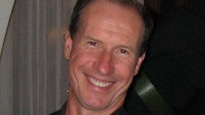Philosophy Work in Progress - Jeff Horty / Open Texture and Defeasible Semantic Constraint

Philosophy Work in Progress - Jeff Horty / Open Texture and Defeasible Semantic Constraint
This week the Philosophy Department's Work in Progress series has a talk by Professor Jeff Horty, "Open Texture and Defeasible Semantic Constraint," that may interest anyone interested in semantics, pragmatics or the philosophy of language.
The term "open texture" is from Friedrich Waismann (1945), who introduced it to describe the observation, which he took to be obvious, that "most of our empirical concepts are not delimited in all possible directions" and cannot "be defined with absolute precision [...] in such a way that every nook and cranny is blocked against entry of doubt," with the result that we are "prevent[ed] from verifying conclusively most of our empirical statements." The notion has often been used by Chomsky, among others, to argue against the view that sentences determine truth-conditions.
Jeff Horty, Open texture and defeasible semantic constraint
I will discuss some problems presented by open textured predicates for the semantics of natural language, as well as in legal theory. I will then (i) sketch an account of constraint in common law, (ii) suggest that this account can be adapted to help us understand open textured predicates as well, and maybe (iii) talk a bit about the reasoning involved in reaching decisions that satisfy the account of constraint.

